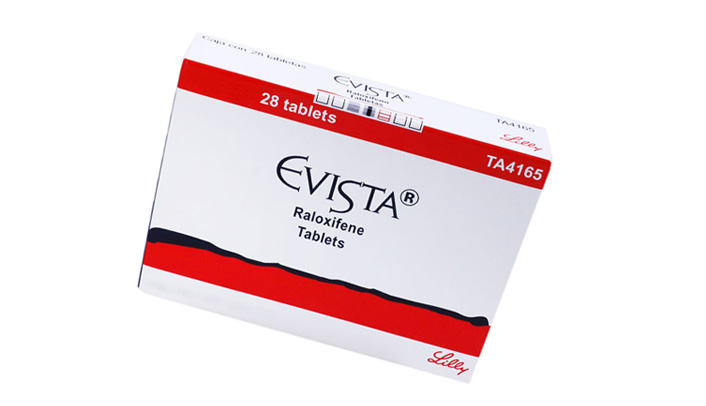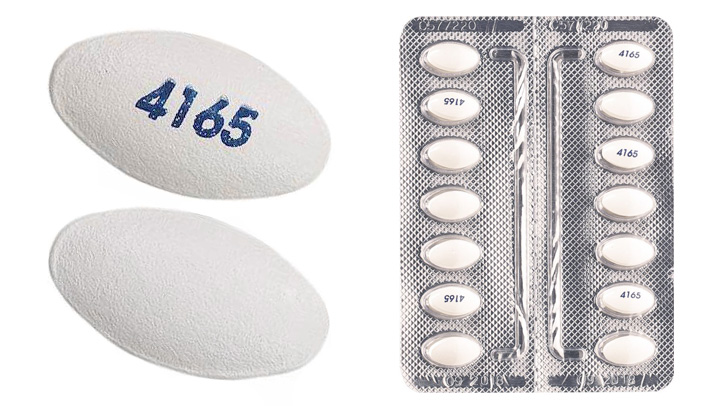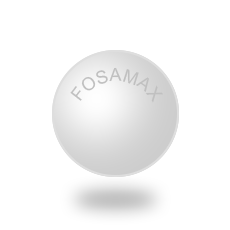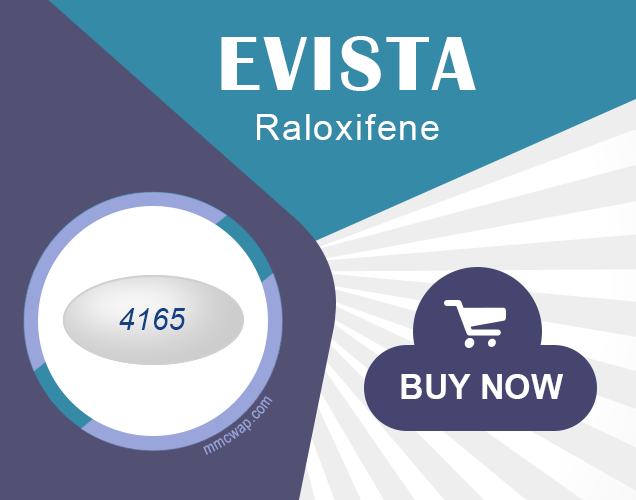Evista
Evista is the brand name of the drug Raloxifene. Medicine is an SERM that is selective estrogen receptor modulator that helps prevent osteoporosis in post menopausal women and also has estrogenic activity on breast and uterus. It also helps in preventing breast cancer in women who are post menopausal.

Mechanism Of Action
The Raloxifene works great by attaching to estrogen receptors. This attaching results in starting of specific estrogenic lanes and stoppage of others. Thus, Raloxifene is an estrogen antagonist or agonist that is also commonly known as SERM that is selective estrogen receptor modulator that helps in maintaining the structure of bone. It decreases the absorption of bone by interfering with the estrogenic actions.
Uses Of Evista
- Treatment of osteoporosis
- Decreases breast density
- Invasive breast cancer treatment
- Prevention of vitamin d deficiency
- Preventing calcium deficiency
Raloxifene is not estrogen hormone supplement but it works according to the body needs and therefore sometimes can be labelled as estrogen in certain body parts where it is needed.
Dosage And Administration
The drug can be taken in form of tablets. Patient can either take them before or after meals as the patient would like. The dosage is not fixed because this drug is under doctors surveillance and patients output of the drug therefore dosage is decided accordingly. But the recommended adult dosage is 60mg. As for the osteoporosis patients the women should taken calcium supplements daily in form of milk or other calcium related products. The average calcium intake in post-menopausal women should be 1500mg/day. Also add vitamin d supplements with calcium in your diet. Do not increase your calcium more than 1500mg/day as there are increased risk of side-effects.
How Long Should You Take Evista?
The duration of treatment with Evista can vary based on individual health conditions and the reason for which it was prescribed. Some individuals may take this drug for several years to manage osteoporosis, while others may use it for a shorter period for breast cancer risk reduction.
Side-Effects
- Headache
- Vomiting
- Hives
- Rash
- Allergic reaction
- Weakness
- Fatigue
- Muscle cramps
- Stomach cramps
- Swelling of lips, face, tongue
- Confusion
- Mood changes
- Fever
- Chills
- Tingling in legs, arms and fingers
- Weakness on one side of the body
- Redness in face, neck
- Trouble in breathing
- Trouble in movement
- Shortness of breath
- Coughing up blood
- Chest pain
- Trouble speaking
- Hot flashes
- Migrane
- Syncope
- Varicose veins
- Dyspepsia
- Flatulence
- Gastroenteritis
- Arthralgia
- Myalgia
- Arthritis
- Depression
- Rhinitis
- Sinusitis
- Vaginitis
- Conjunctivitis
![]() Highlights Of Prescribing Information of Evista
Highlights Of Prescribing Information of Evista
Precaution And Warning
Give your full personal and past history of any surgeries you had or any allergic reaction you have due to any medications. If you have any medical history of stomach, liver, kidney or intestinal diseases including any heart diseases including blood pressure and blood clot please let your doctor know.
Pregnancy And Breast-Feeding
It should not be used while you’re pregnant or breast feeding as it is harmful for the unborn baby. Use it only if it is absolutely necessary.
Drug Interaction
Evista can interact with various medications, potentially affecting their efficacy or causing adverse effects. Some of the interactions may include:
- Cholestyramine and Colestipol: These drugs used to lower cholesterol levels may reduce the absorption of Raloxifene. It's recommended to take Evista at least 1 hour before or 4 to 6 hours after taking cholestyramine or colestipol.
- Warfarin and other blood thinners: There's a potential for increased bleeding risk when taking Raloxifene with blood-thinning medications. Regular monitoring of blood clotting factors may be necessary when using these medications together.
- Hormonal contraceptives or estrogen-containing medications: Combining Evista with these drugs might affect the effectiveness of either medication.
- Systemic glucocorticoids: Taking Raloxifene with corticosteroids might increase the risk of experiencing blood clots.
- Certain antibiotics and antifungals: Some antibiotics and antifungal medications may interact with Raloxifene, potentially affecting its efficacy or increasing the risk of side effects.
- Nonsteroidal anti-inflammatory drugs (NSAIDs): Using NSAIDs with Evista may increase the risk of stomach irritation and ulcers.
Difference Between Brand and Gemeric Evista
The primary difference between brand and generic Evista lies in their names, manufacturers, and potentially in their inactive ingredients.
Brand Evista refers to the medication manufactured and marketed by the original developer, which, in this case, is Eli Lilly and Company. The active ingredient in both brand and generic versions of Evista is raloxifene hydrochloride, which means they both work in the same way and have the same active ingredient at the same dosage.
Generic Evista, on the other hand, is manufactured by companies other than the original patent holder after the patent for the brand-name drug has expired. Generic medications are required to contain the same active ingredient and meet the same quality and safety standards as the brand-name drug. However, they might have different inactive ingredients (such as fillers or dyes) from the brand-name drug. The difference in inactive ingredients does not usually affect the effectiveness of the medication, but it might impact things like taste or allergic reactions in some individuals who are sensitive to certain ingredients.
In terms of efficacy and safety, generic medications, including generic Evista, are rigorously tested by regulatory authorities to ensure they are equivalent to the brand-name drug. They are generally considered to be as safe and effective as their brand-name counterparts.
Both brand and generic versions of Evista are used to prevent and treat osteoporosis in postmenopausal women and reduce the risk of invasive breast cancer in postmenopausal women with osteoporosis or at high risk for breast cancer. Choosing between brand and generic versions often comes down to factors like cost, personal preference, and availability. It's essential to follow your healthcare provider's advice regarding which version to use and to report any unusual reactions or concerns when switching between brand and generic medications.
Drug Images

The images of medicines shown in the pictures may vary depending on the dosage, brand name, and for medicines manufactured by different pharmaceutical companies.
Raloxifene Hydrochloride
It is a selective estrogen receptor modulator used primarily in the prevention and treatment of osteoporosis in postmenopausal women. Additionally, it's prescribed to reduce the risk of invasive breast cancer in postmenopausal women with osteoporosis or those at high risk of breast cancer. Medication is not for use in men.
Drug works by binding to estrogen receptors in various tissues throughout the body. It acts as an estrogen agonist in some tissues (such as bone), where it helps maintain bone density and strength, reducing the risk of fractures associated with osteoporosis. Conversely, it acts as an estrogen antagonist in other tissues (such as breast tissue), where it helps reduce the risk of breast cancer by blocking the effects of estrogen.
Raloxifene is not a hormone but has estrogen-like effects on certain tissues. It does not carry the same risks associated with traditional hormone replacement therapy (HRT) and has a different mechanism of action compared to estrogen.
Related Drugs
Fosamax
Conditions:
Bone Disorders




